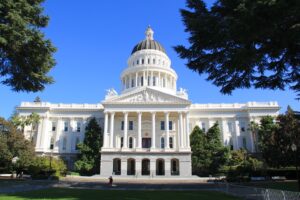
In California, Gov. Gavin Newsom and his Democratic colleagues have proposed a comprehensive plan to cut state spending on numerous public resources. This pressing need for action comes after analysts projected the state’s deficit to increase by $73 billion if no changes are made. The proposed budget cuts, therefore, will maintain financial security and enhance support for the Democrats in power.
The initial proposed budget reduction totals $17.3 billion, split into five different categories. Roughly $3.6 billion are immediate reductions in spending. There were low-hanging fruits, such as the over $750 million worth of salaries allocated to vacant positions. But there were also major decisions such as pulling back $500 million from K-12 school building projects. While these decisions may be tough calls, they are the necessary sacrifices to prevent the state deficit from ballooning into a financial crisis. If Gov. Gavin Newsom and the Democrats in power decided to keep spending rampant, then the state deficit could spiral out of control. This would lead to severe economic hardship for Californians and a loss of trust in the current leadership.
In certain cases, budget cuts are essential for sustaining a vibrant economy and can help states attain financial security. Without stability, the economy is more susceptible to a recession. It is also important for lawmakers to begin more comprehensive auditing of where the state funds are headed. Auditing is critical for ensuring that the public funds are being used optimally. The transparency that comes with official audits indicates whether the program is effective. It also determines where public expenditures need room for improvement.
California has had an extensive history of wasteful public spending. In 2008, voters approved a proposition that allowed the state to use billions of public money to create a high-speed rail from Northern California to Southern California. The original goal for the high-speed rail was to be completed by 2020. What voters didn’t foresee is how inefficient the state officials would be at implementing it. Four years after the state’s initial deadline, there is still “no set timeline” as to when the project will be completed.
Another critical issue California has been facing is homelessness. Despite state lawmakers and bureaucrats investing billions to address the crisis, the state, unfortunately, holds the record for the most unhoused people. To add insult to injury, audits have found that there has been a notable absence of consistent oversight of the effectiveness of these homeless support programs. Wasteful spending of public funds and incompetency to properly track how these public funds are being utilized give the public a reason to be extremely skeptical of public leaders. The budget cuts are a step in the right direction toward regaining the electorate’s trust.
Gov. Newsom is in the midst of his lame-duck session and has strategically placed himself in the spotlight during this 2024 election cycle. Even though Joe Biden is the Democratic nominee, it is likely that Newsom intends to use the spotlight given to him as a campaigning tool to try and become the frontrunner for the 2028 Democratic Primaries. However, with Democrats having supermajority control in California, there is a stigma that West Coast Democrats are too far to the left and, therefore, are unelectable nationwide.
Even though Newsom has a net positive in statewide public support, most California voters believe that the budget deficit must be dealt with by “making major cuts.” More than 60% of registered voters in California agreed with Newsom’s “call to scale back” the state’s funding towards “comba[ting] climate change.” With the budget cuts in place, Newsom and his fellow Democrats have the leverage to reclaim that they are more moderate and do indeed have fiscal responsibility in their governance.
Lawmakers in California have a unique opportunity to steer the state toward a more prosperous future. While these budget cuts may be challenging choices, they are also the necessary ones. A state where politicians make wise fiscal management decisions is favored and imperative for a prosperous economy. By embracing these tough but essential cuts, California’s leaders demonstrate their commitment to financial discipline. This, in turn, showcases their ability to embrace a common ground and not just placate towards one side of the aisle.







